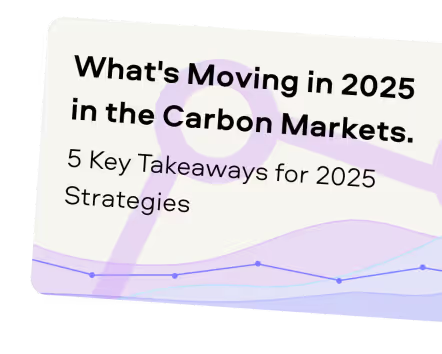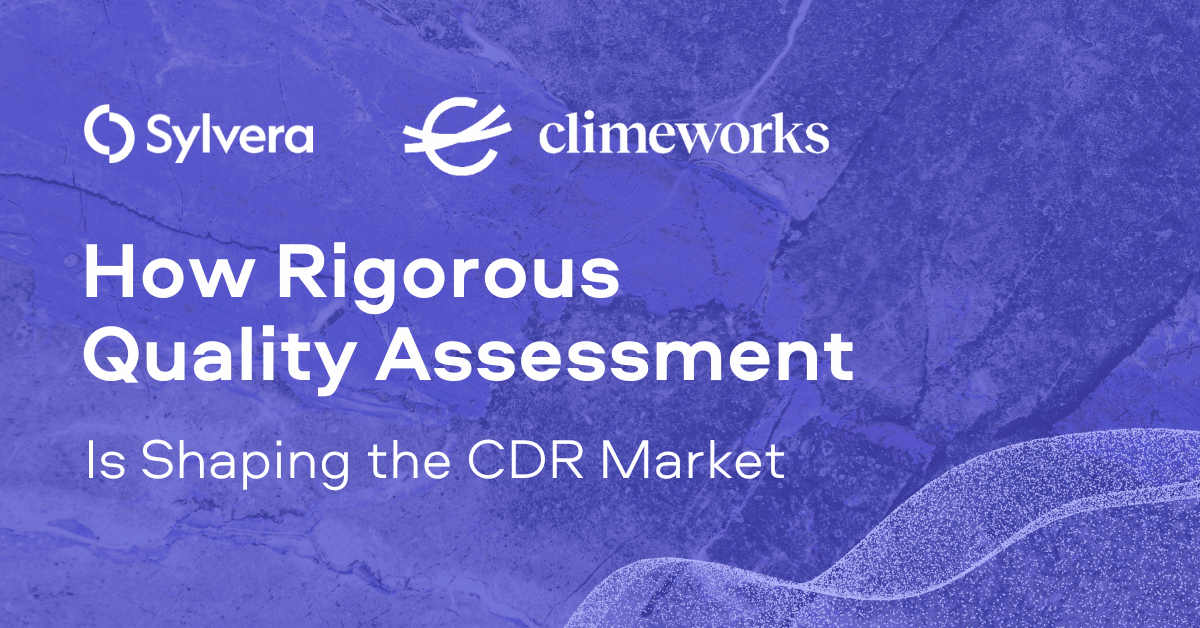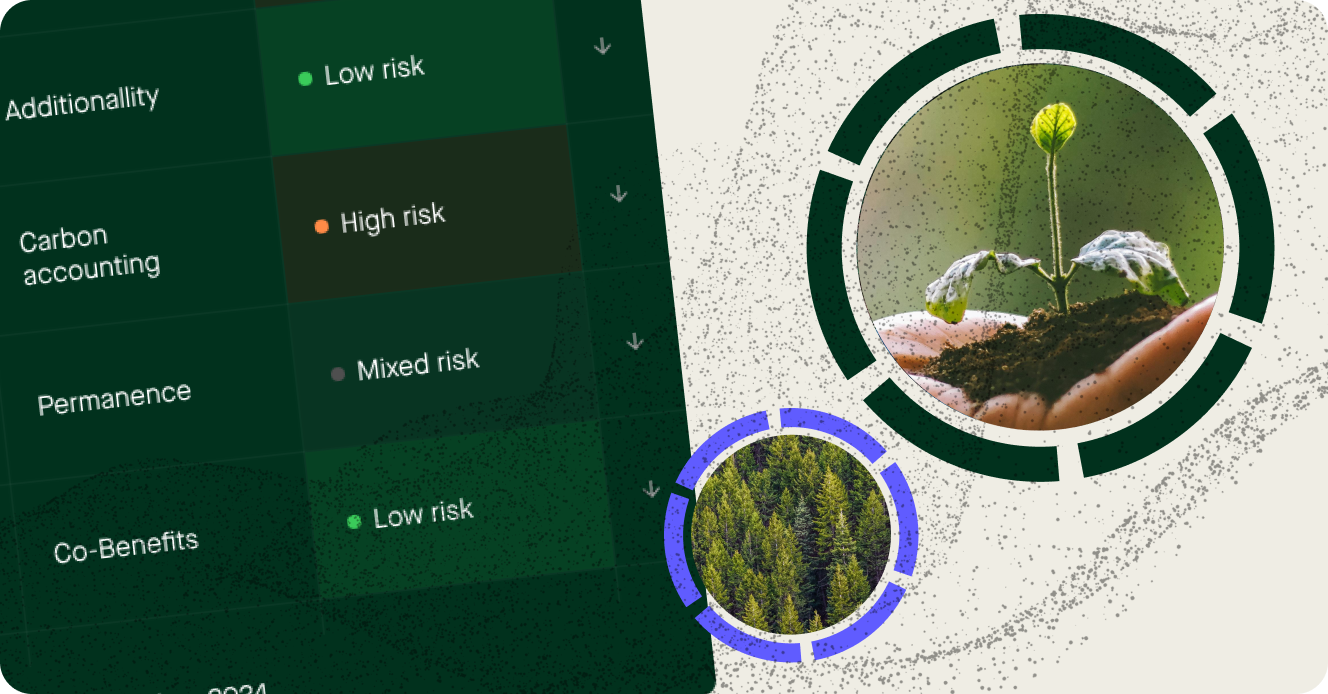「私たちは長年にわたり、信頼できる格付けの提供に注力し、現地データチームへの投資を重ねてきました。これにより当社の格付けの正確性は確保されていますが、購入者が検討している数千のプロジェクトにわたるスケールを実現することはできません。」
カーボンクレジット調達の最新動向について詳しくは、当社の記事「Key Takeaways for 2025」をご覧ください。調達戦略を改善するための、データに基づく5つのヒントをご紹介しています。

加えて:Connect to Supplyをご利用のお客様は、Sylveraのその他のツールもご利用いただけます。プロジェクトの格付け確認や強みの評価、高品質なカーボンクレジットの調達に加え、プロジェクトの進捗状況のモニタリング(特に発行前段階で投資している場合)も可能です。
Sylveraの無料デモを予約して、調達機能やレポーティング機能を体験しましょう。
As demand for CDR projects gains momentum and projects scale from pilots to commercial operations, the gap between registry certification and actual credit quality has become a focus.
Climeworks' recent announcement of its quality framework for evaluating CDR projects reflects a broader market shift, as the ecosystem recognizes that certification under a carbon standard, while necessary, is not sufficient to guarantee quality.
This trend toward more rigorous assessment is needed. But it also raises important questions about what makes a quality framework effective, who should conduct assessments, and how buyers can navigate a complex landscape.
Why Are Quality Frameworks Gaining Traction?
Registry methodologies provide foundational standards for how projects should measure, report, and verify carbon removal.
These standards are essential infrastructure, however, they cannot capture the full spectrum of project-level risks, operational capabilities, or execution challenges that determine whether a CDR credit represents genuine, durable climate impact.
Projects can be methodology-compliant and registry-certified while still carrying quality risks. This creates a challenge for corporate buyers making multi-million-dollar procurement decisions, investors evaluating project finance opportunities, and the developers themselves, seeking to differentiate truly high-quality projects.
The emergence of quality frameworks signals a market maturation. When organizations invest in systematic evaluation beyond basic certification requirements, it demonstrates that the industry is moving from "does this meet minimum standards?" to "how do we meet and prove high quality?"
What Do High-Quality Assessment Frameworks Require?
While specific approaches vary, there is growing consensus around core principles that rigorous CDR assessment should address:
Conservative measurement and verification that includes appropriate measurement techniques, confidence intervals, and buffers that prevent over-crediting.
Comprehensive carbon accounting that tracks all emissions associated with removal activities through full lifecycle assessment.
Robust additionality assessment that examines financial viability, regulatory context, and common practice baselines.
Permanence and reversal risk evaluation appropriate to each pathway's storage mechanism, with assessment of monitoring capabilities and mitigation strategies.
Social and environmental safeguards that ensure projects don't create negative impacts on communities or ecosystems while pursuing carbon goals.
Execution and delivery risk analysis that examines whether projects have the operational capabilities, financial stability, and supply chain resilience to deliver promised credits at volume and on timeline.
Why Pathway Specificity Matters
As the market evolves, pathway specificity matters as material risks, measurement challenges, and scaling barriers differ dramatically across removal methods. A framework designed to assess all CDR approaches using the same criteria cannot capture the nuanced operational realities that determine quality, for example:
For direct air capture, assessment must evaluate energy infrastructure requirements, storage site integrity, and the distinction between learning platforms and commercial operations.
For enhanced rock weathering, downstream losses, farmer engagement protocols, and equipment protection become critical.
For biochar, feedstock variability, pyrolysis process control, and application tracking drive quality outcomes.
For mangroves, sea level rise mitigation and soil carbon measurement present unique challenges.
A deliberately pathway-specific framework with tailored assessment criteria evaluates DAC differently than BECCS, biochar differently than enhanced weathering, and mangroves differently than reforestation - because the questions that determine quality are fundamentally different across these pathways.
Where Does the Market Go From Here?
The emergence of multiple quality frameworks is a healthy sign of market maturation, not fragmentation.
As CDR scales from millions to billions in annual investment, the industry needs assessment infrastructure that is:
- Detailed to capture operational realities that determine actual project performance
- Accurate to ensure precise carbon quantification backed by robust data and scientific rigor
- Adaptive in terms of continuous improvement to evolve with emerging science, updated methodologies, and operational learnings
- Pathway-specific to reflect the unique risks and challenges of different removal approaches
- Transparent to withstand regulatory and public scrutiny
- Independent to provide unbiased quality signals
Quality frameworks don't slow down the CDR market. They accelerate it by building the trust infrastructure that unlocks investment, buyer confidence, and responsible growth.
The market's increasing focus on rigorous assessment - from developers, buyers, and ratings agencies - signals an industry ready to scale with integrity.










.jpg)




